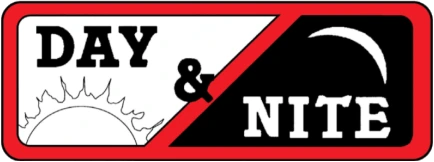Have a Sewer Gas Smell in Your Home? Check Your P-Traps!
It’s not uncommon for a customer to ask for our help finding the source of a bad sewer gas smell. It happens quite often because the problem is tough to diagnose and locate for lots of different reasons. We usually start with a few pointers over the phone to see if they can solve the problem without our help.
First, we ask whether they’re experiencing a real sewer-gas smell…or something else; perhaps a ‘dead animal’ smell? The difference is fairly easy to discern. Usually, a dead animal smell has a strong, sickeningly sweet odor that will almost always bring about a ‘gag response’ in your throat and often ‘rolls your stomach’. A regular sewer-gas smell is just a bad stink with a definite odor of feces and sometimes a rotten-egg (hydrogen sulfide) smell and/or a moldy mustiness too. We also try to ask what has been happening in the home or business lately in terms of remodeling, pest control etc. to get clues about what direction to go. Finally, we talk to them about P-traps, and the possibility of some fixture’s P-trap ‘drying-out’… because an empty or ‘dried-out’ P-trap is by far the most common cause of all sewer-gas smells.
Each and every plumbing fixture and/or plumbing drain has a P-trap on the drain if it has been installed according to code, and it’s these P-traps that protect us from sewer gas.
If a P-trap has become empty of water or dried out for any reason, it will allow the sewer gas air inside the waste pipes to come pouring into where we live and work. Every P-trap on every drain needs to have a vent that protects it; that’s what all those pipes are that we see sticking out of our roofs.
Every time a drain is used, all that water and material rushing down our pipes displaces a lot of air, and it makes our plumbing systems kind of ‘breathe’…both in and out. It’s just like when you stand on the shoulder of a road, and a big truck goes zooming past. That truck is pushing a massive ‘air-wave’ in front of it, and it’s also dragging a big bunch of air behind it that hits us and makes us brace ourselves and turn away. Every time we send anything down one of our drains, the same thing happens with the air in the system. If that drainpipe can’t ‘pull and push’ air down the drain and out the roof, then it will try to pull and push air right through our P-traps, sometimes making the sewer gasses go into the room. That’s why sometimes in older homes or cabins or additions that are not properly vented, when one drain is draining we’ll start to hear a ‘glug, glug, glug’ sound from a different drain because air/sewer gas is being sucked or pushed through a P-trap. And if the water in that P-trap gets sucked or pushed enough, it gets so low that the ‘seal’ is lost and it no longer protects us from the sewer gasses.
Some drains have visible P-traps, like those under a bathroom or kitchen sink; and some drains have P-traps that are hard to see or hidden, like on a floor drain, a shower or a toilet. However, every drain must have a P-trap that is properly vented, and every P-trap must have a regular supply of water going through it to keep the ‘trap-seal’ working properly.
So often after talking about this for a while, the customer will realize something like… “Well, the smell is usually somewhere near the spare bathroom, and nobody has used that shower since my daughter was home last Christmas break”. The ‘fix’ is easy on those. The customer just runs water for a couple of minutes in the shower, airs things out, and the bad smell doesn’t come back. Nine times out of ten, a sewer gas smell problem is coming from a P-trap that has lost its water for some reason; the trap is leaking, something is siphoning the trap empty (Example: it’s full of long hair that is ‘wicking’ the water down enough to break the water-seal), or it’s just drying out from not being used. In the Pacific Northwest, it takes 3 to 5 months of not using a fixture before the water in the P-trap dries out enough to let sewer gasses into the room.
So far we’ve identified the reason and the remedy for various sewer gas smells; whether the source was an unused P-trap in a small rambler or a forgotten, open clean-out that got covered by dry-wall on the 26th floor of a commercial building. Regardless of the cause, it just takes time, patience, and a little logical detective work once you know the basics of the system.
Bruce Davis, Sr.
President, Director of Education and Learning, Sales Manager
Licensed Journeyman Plumber, Licensed Electrician,
HVAC/R Electrical Administrator,
HVAC/R Certified WA State C.E.U. Instructor
Bruce Sr is President of Day & Nite Plumbing & Heating, a 65+ year old family owned and operated plumbing and heating business in Lynnwood, Washington. Bruce can be contacted at: Email: Bruce@dayandnite.net
Day & Nite Plumbing & Heating Inc.
16614 13th Ave. W. Lynnwood, WA 98037
800-972-7000
